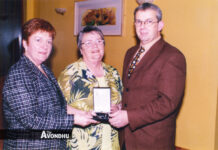
A new exhibition exploring the rich history of Limerick through what is thought to be the largest collection of Limerick-related postcards in existence, is currently on display at Saint Mary’s Cathedral.
Organised by Limerick Museum, ‘Postcards From Limerick’ utilises the museum’s vast collection of postcards and marks the 1,100th anniversary of the foundation of Limerick City.
Some 1,100 years ago, the Vikings sailed up the Shannon estuary. The first Viking raid recorded in Ireland took place in 795 AD when islands off the north and west coasts were plundered. The Vikings used the River Shannon to pillage monasteries such as Scattery Island, Mungret, Inis Cealtra and Clonmacnoise.
In 922AD the Viking leader, Tomrar Helgason established a permanent base on Inis Sibhton, later to be called King’s Island. It was from this settlement that Limerick city developed. The name Limerick is likely of Viking origin, as are the local place-names of Dooradoyle, Rathurd and Athlunkard.
CHARTING HISTORY
Councillor Gerald Mitchell, Mayor of the City and County of Limerick, performed the official opening.
“Postcards From Limerick is a fantastic exhibition. Using Limerick Museum’s vast postcard collection, it brings us on a journey through the city’s eleven centuries in an engaging, yet informative manner. All the major milestones are covered: the Normans, the multiple Sieges of the seventeenth century, the Georgian golden age, trade and industry and of course Sporting Limerick.”
The exhibition has been funded by the Department of Tourism, Culture, Arts, Gaeltacht, Sport and Media who have funded this exhibition under the Regional Museums Exhibition Scheme. It continues in Saint Mary’s Cathedral until 17 November.









